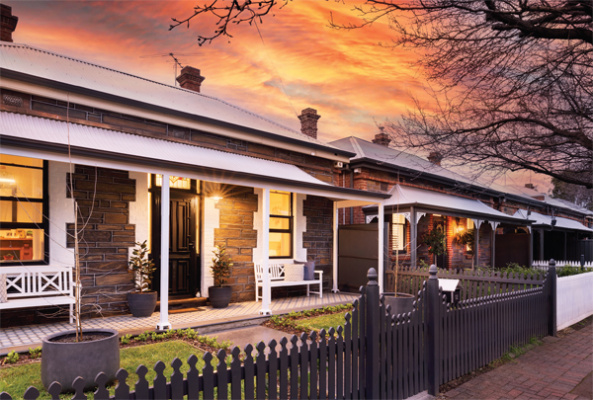- Council
Protecting Inter-War homes: A win for local built heritage

28/10/2025
The City of Norwood Payneham & St Peters has successfully led the way in protecting an important part of our City’s built heritage history.
State Planning Minister Nick Champion officially adopted the Inter-War Housing Heritage Code Amendment initiated by the City of Norwood Payneham & St Peters, giving new heritage protections to 20 homes and an area in Heathpool that reflects the City’s development from the 1910s to the 1940s.
This significant decision means that homes in distinctive inter-war architectural styles—in suburbs such as Heathpool, St Peters, College Park, Hackney, Marden, Marryatville, and Maylands—are now protected from demolition.
“It is important that we preserve these beautiful homes and neighbourhoods,” Minister Champion told InDaily.
Why was this change needed?
Before this amendment, heritage protections mostly focused on very old buildings from the 1800s and early 1900s. This left many homes built between World War I and World War II—known as the inter-war period—without any protection.
When handing down his decision, the Minister also advised that, “In adopting the Code amendment, I am of the view that the Code Amendment will ensure that protection is afforded to dwellings constructed between the First and Second World Wars, a period that is currently underrepresented within existing heritage listings.
These houses show how architecture and lifestyles evolved after the First World War. To prevent these significant homes from being lost, the Council proposed the Inter-War Housing Heritage Code Amendment, which has now been approved by the Minister.
What does the Code Amendment do?
The amendment introduces new planning rules to protect inter-war homes that have historic and architectural importance. It does this in two main ways:
Local Heritage Places — 19 homes have been given Local Heritage status, recognising their cultural and historical value.
Historic Area Overlay — In Heathpool, 32 properties have area-wide policy applied to preserve the historic character under a new Historic Area Overlay. This ensures that the look and feel of the streets remain consistent with their original 1910s to 1940s character.
Mayor Robert Bria says the inclusion of the 19 properties, “Represents an important step of the council’s ongoing commitment to heritage protection”.
“These dwellings represent an often-forgotten period of architecture between the World Wars,” says Mayor Bria.
“To have these beautiful and unique properties listed meets an important objective of Council’s Built Heritage Strategy.”
“Following the public consultation period, the Council gave careful consideration to the feedback provided in the submissions received and made a number of changes to the Code Amendment as a result of this”
The amendment also introduces a Heritage Adjacency Overlay for nearby properties, helping to make sure any new development fits the area’s traditional style.
How does it benefit our City?
The decision by Minister Champion ensures that buildings in popular inter-war styles—such as Tudor, Spanish Mission, Art Deco and Californian Bungalow—will now be protected.
This amendment helps the City preserve more of its architectural history and raises awareness of the value of heritage protection. It supports the goals of the Council’s Built Heritage Strategy 2022–2027, which aims to protect key examples of inter-war housing and ensure that new developments respect the city’s historic character.
Mayor Bria thanks the State Government for its support of the project and funding assistance through the Heritage Code Amendment Grant scheme.
“The Council thanks Minister Champion and the Malinauskas Government for supporting the Council’s vision to provide appropriate heritage status for these dwellings, as well as providing increased protection for older homes in Heathpool to help the historic built form in that suburb stay intact.”
What makes inter-war homes special?
Homes built between 1912 and 1949 in the City of Norwood Payneham & St Peters have been recognised for their craftsmanship, style, and connection to garden living. Some common features include:
- Gabled roofs with Marseilles tiles
- Wide verandahs and decorative pillars
- Brick or rendered walls
- Leadlight windows, arched doorways, and chimneys
- Single-storey street layout with generous gardens.
These homes blend beauty with practicality and are an important part of our City’s visual identity.
Why this matters
The adoption of the Inter-War Housing Heritage Code Amendment is a major achievement for local heritage protection. It ensures that the character, charm, and history of our city—found in its homes and streets—will be preserved for generations to come.
More information
To read more about the Inter-war Housing Heritage Code Amendment, visit: PlanSA - Inter-War Housing Heritage Code Amendment